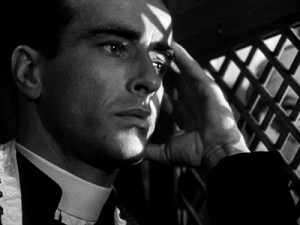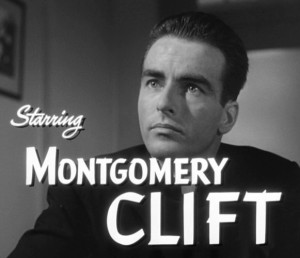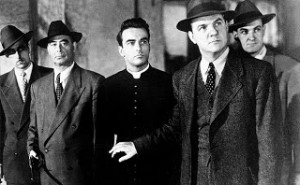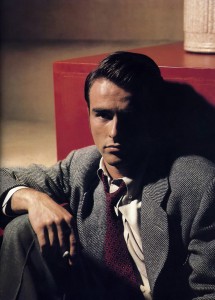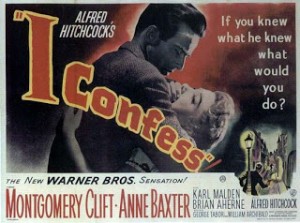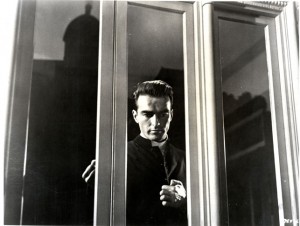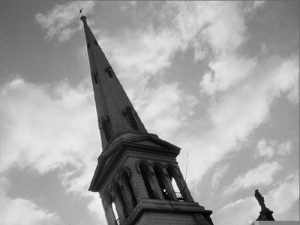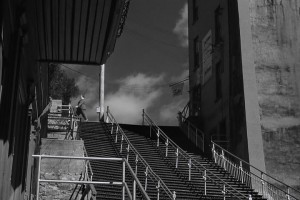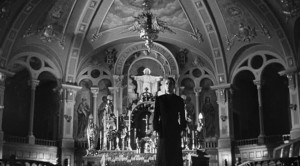I Confess **** (1953, Montgomery Clift, Anne Baxter, Karl Malden) – Classic Film Review 447
Alfred Hitchcock’s 1953 film noir-style thriller film I Confess, set and filmed on location in moody Quebec City, is a worthy and watchable but glum experience. There is too much internal introspection for an exciting movie. It is a bit too serious and sombre, a bit too dour to be engaging or entertaining. Yet there’s intelligence, interest and a good spirit everywhere.
Up there in Canada, the priest Father Michael Logan is unable to divulge a murderer’s confession. It’s the confession of Otto Keller (O E Hasse), the German refugee caretaker-sexton at Logan’s Catholic church in Quebec, where his wife Alma (Dolly Haas) also works housekeeper. Otto has robbed a house where he works as a gardener, but was caught and killed the owner, a lawyer named Vilette. Struck down with guilt, he heads back to the church and confesses his crime to Logan who, unfortunately for him, happens to be working late.
Also unfortunately for him, Vilette was blackmailing Father Michael over a love affair he had before he was ordained, and even more unfortunately, Keller was wearing a priest’s cassock during the killing. Father Michael can’t provide a proper alibi for the time of the killing and can’t try to clear himself because he is bound by his holy vows to keep the secrets of the confession.
He is arrested, indicted and sent for trial.
Montgomery Clift stars as the priest and he is just the right actor for a tortured soul role, so he does it perfectly. With a priest at the centre of the story, Hitchcock can’t go the route of romance, and nor can he go for witty banter or even ironic dark comedy with this story, so three of his strong points are perforce totally missing.
And there is not really much of a mystery or a thriller here either. We know who the killer is. The only question is how or if Clift can wriggle out of his deadly dilemma. What can Hitchcock put in the place of a mystery or a thriller? A portrait of a tortured soul, some Catholic guilt, a discussion of religion, morals and principles, three decent star performances, and that’s about all.
Hitchcock says: ‘Any priest who receives the confession of any killer becomes an accessory after the fact… We Catholics know that a priest cannot disclose the secret of the confessional, but the Protestants, the atheists and the agnostics all say “Ridiculous, no man would remain silent and sacrifice his life for such a thing.” We shouldn’t have made the picture.’
Karl Malden co-stars as dogged cop Inspector Larrue, who comes to investigate and starts to suspect that Father Logan has blood on his hands. Anne Baxter plays the married woman Ruth Grandfort, who foolishly still loves the clearly unattainable Clift, so she might be able to help him.
With Clift outstanding, expressing all his emotion and pain in his eyes, the three main performances hit the right notes. They are not quite inspired or inspiring, but they are fully committed. However, very unusually in a Hitchcock film, in some cases down the support cast the acting is jittery or even bored-seeming, perhaps reflecting Hitchcock’s unease with the project, which gives the impression of verging on lofty disdain. Or at least of not being involved or inspired enough. Hitchcock and his collaborators seem a tiny bit tired, having a slightly off day.
The film’s main attractions are Hitchcock’s magic touches with some of the sequences (especially the tense breakfast table scene with Alma Keller serving coffee to the priests), Robert Burks’s atmospheric black and white cinematography and the exploration of Catholic guilt themes in the literate screenplay by George Tabori and William Archibald, based on Paul Anthelme’s antique 1902 play Our Two Consciences (Nos Deux Consciences).
The sedate pace and the lack of openly expressed human feelings are the main deficits in a thriller that is tense and intriguing without ever being quite satisfyingly suspenseful. Hitchcock admitted: ‘The final result was rather heavy handed. The whole treatment was lacking in humour and subtlety. My approach should have been more ironic, as in Psycho, a serious story told with tongue in cheek.’
Haas was picked to play Alma Keller because of her physical resemblance to Hitchcock’s wife Alma Reville.
But there were casting troubles. Hitchcock wanted Laurence Olivier for the lead but he was overruled by Warner Bros. He had already offered it to an unsuitable Cary Grant but Grant wisely turned it down. But Cary Grant did get to play the priest role when I Confess was adapted for the radio programme Lux Radio Theatre on September 21, 1953.
Hitchcock did not really get along with Clift, partly because he not understand Clift’s Method acting and partly because Clift blew take after take, failing to follow Hitchcock’s instructions.
Hitchcock admitted: ‘I didn’t want Anne Baxter to play the feminine lead. I wanted Anita Björk, who had played Miss Julie. However, Warner Bros decided against her.’ In fact Hitchcock had hired Anita Björk after seeing her in Miss Julie (1951) but Warner Bros insisted that Hitchcock find another actress after she arrived in Hollywood with her lover and their baby.
Warner Bros were very busy interfering, In the source play and original screenplay, the priest and his lover had an illegitimate baby, and the priest was executed. Warner executives demanded these ideas were removed. When George Tabori refused to change his script, Hitchcock brought in William Archibald to rewrite it. The local diocese had rescinded its permission to film in Quebec churches after reading Tabori’s original script and objecting to the priest’s execution.
Filming took place largely on location in Quebec City with many shots of the city landscape and interiors of its churches and other iconic buildings such as the huge Château Frontenac, scene of the final chase. Shooting took place in Quebec and Hollywood from August 21 to October 22, 1952.
Walking through the town, Logan passes by a cinema showing Murder, Inc – so there is a flash of humour after all.
Hitchcock’s cameo appearance has him crossing the skyline at the top of a huge flight of stairs during the film’s second minute—right after the opening credits.
The cast are Montgomery Clift as Father Michael William Logan, Anne Baxter as Ruth Grandfort, Karl Malden as Inspector Larrue, Brian Aherne as Willy Robertson, O E Hasse as Otto Keller, Roger Dann as Pierre Grandfort, Dolly Haas as Alma Keller, and Charles Andre as Father Millars.
I Confess had one of the longest pre-productions of any Hitchcock film, with 12 writers working on the script over eight years. Hitchcock created detailed storyboards for each scene.
I Confess is directed by Alfred Hitchcock, runs 95 minutes, is made by Transatlantic Pictures, is distributed by Warner Bros, is written by George Tabori and William Archibald, based on the play Our Two Consciences (Nos Deux Consciences) by Paul Anthelme, is produced by Alfred Hitchcock, is shot by Robert Burks, and is scored by Dimitri Tiomkin.
At the box office it took $2 million (US). It went on to be a favourite among French New Wave writers and filmmakers.
Hitchcock was also busy dissolving his partnership with Sidney Bernstein in the film’s production company Transatlantic Pictures. He was also busy with the wedding of his daughter Patricia Hitchcock in 1951.
© Derek Winnert 2013 Classic Movie Review 447
Check out more reviews on http://derekwinnert.com/

